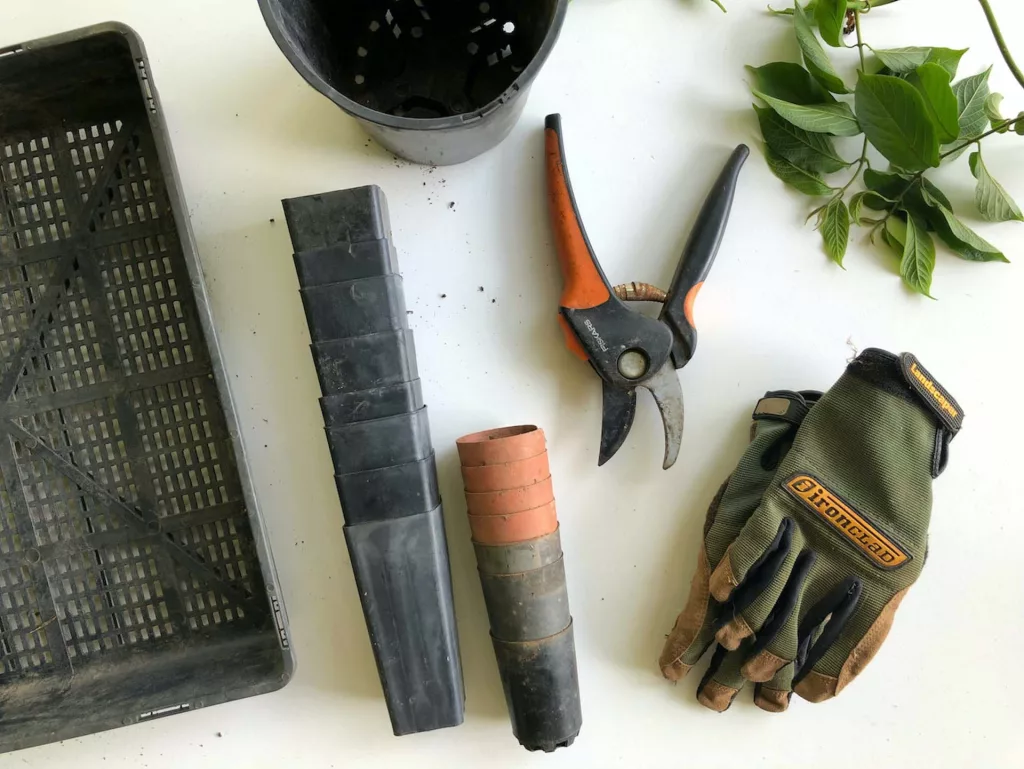-
 Sumeyye Tercan
★★★★★
2 weeks ago
Sumeyye Tercan
★★★★★
2 weeks ago
I recently hired B.C Furniture Removals services for a furniture removal, and I was quite impressed! From start to finish, they were reliable and efficient. They arrived on time, handled my furniture with great care, and ensured everything … More was securely transported. Their dedication to making the transition between my old and new home smooth and stress-free truly stood out to me. They offered and assisted with extra tasks without hesitation, further easing the process. I highly recommend Barış and his team for anyone seeking a hassle-free moving experience. Their exceptional service and customer care are unmatched.
-
 B Moresco
★★★★★
a month ago
B Moresco
★★★★★
a month ago
Prompt, fairly priced, incredible customer service, great guys, very capable of carrying anything big or awkward!We had a great experience! Nothing fancy but good ole fashion efficient work rate & lovely to deal with!Thanks Baris and … More your team
-
 Ali Ozsahin
★★★★★
2 months ago
Ali Ozsahin
★★★★★
2 months ago
BC Furniture Removals were absolutely fantastic! The team was professional, efficient, and handled our furniture with care. They made the entire moving process stress-free and smooth. Highly recommend their services, Thankyou guys for everything! … More
-
 Whitney Sugden
★★★★★
4 months ago
Whitney Sugden
★★★★★
4 months ago
Highly recommend BC furniture removers. Pricing was so reasonable and Duane and Chris were very organised and speedy. They were machines and did not take their foot off the gas until the job was done. They took great care when moving our … More furniture and we couldn’t have asked for a more smoother move. Will be recommending you guys to anyone I know who has an upcoming move. Thank you so much
-
 Leigh Doddy
★★★★★
4 months ago
Leigh Doddy
★★★★★
4 months ago
Fantastic experience with the team on a big move. Professional, punctual and friendly . We needed two trucks (we estimated) and from what we had laying around, seemed like we needed three when I saw them pull in. When I asked if it could … More be done, Baria simply said “we’ll make it work”. And they did. These guys (4 came for our load) worked like machines for 7hrs. Tetris masters is all I can say . Thanks for an excellent job. Really appreciated the work.
-
 John Ozturk
★★★★★
5 months ago
John Ozturk
★★★★★
5 months ago
We have been using BC Furniture Removals for over 10 years and have found Baris and his team very professional polite friendly and very careful when moving our furniture.Definitely recommend them to anyone that needs their furniture removed.Thank … More you Baris.
-
 Heather Blanshard
★★★★★
5 months ago
Heather Blanshard
★★★★★
5 months ago
Paul and his colleague made moving as seamless as can be! They worked quickly and took good care of my belongings. They navigated some tricky access professionally and were really friendly in the process. Will definitely use again when … More I next move! Thanks so much.
-
 Ally Khan
★★★★★
6 months ago
Ally Khan
★★★★★
6 months ago
Baris, Paul and the guys are nothing short of AMAZING!!!! They took so much stress out of moving. Super friendly, efficient and extremely careful with everything including my beloved piano. Absolutely recommend them 100% and will be calling … More Baris if I ever need removal services again!!!
-
 Sales Ace Kitchen & Cabinetry
★★★★★
6 months ago
Sales Ace Kitchen & Cabinetry
★★★★★
6 months ago
Very reliable and well priced. We use them for deliveries for our cabinetry business. Would recommend them highly
-
 Adeline Lane
★★★★★
10 months ago
Adeline Lane
★★★★★
10 months ago
Wonderful professional stress free moving. Highly recommended.
-
 Amrita Roy
★★★★★
10 months ago
Amrita Roy
★★★★★
10 months ago
We used BC furniture removals for our moving from Heidelberg to Montmorency. The entire move was seamless and professional. Baris and his team also helped us with the assembly of the furniture which was a bonus for us especially with a … More toddler.We highly recommend BC furniture.
-
 Karen [email protected]
★★★★★
10 months ago
Karen [email protected]
★★★★★
10 months ago
The guys from BC furniture removals, were great. Prompt efficient, friendly, and nothing was too much trouble. They made a stressful day easy.
-
 Jaycee Chong
★★★★★
10 months ago
Jaycee Chong
★★★★★
10 months ago
I recently hired BC Furniture Removal for my move, and I couldn't be happier with the experience. From start to finish, the staff were incredibly friendly and professional. They worked quickly and efficiently, handling all of my belongings … More with great care. The pricing was very reasonable, especially considering the high quality of service provided.What truly sets them apart is their dedication to customer satisfaction. Not only did they make my move seamless and stress-free, but they also came to the rescue for my neighbour, who had been let down by a different removalist. BC Furniture Removal stepped in and saved the day for both of us, proving just how amazing they are at what they do.I've heard horror stories about moving companies, but BC Furniture Removal restored my faith. I highly recommend them to anyone in need of reliable, friendly, and efficient movers. Thank you for going above and beyond!
-
 Bernard Chisholm
★★★★★
10 months ago
Bernard Chisholm
★★★★★
10 months ago
We have just recently used BC furniture removalists,the guys were on time and nothing was too much trouble, we would definitely use them again .
-
 Ahmed ali
★★★★★
10 months ago
Ahmed ali
★★★★★
10 months ago
Best removal amazingThey really care and price is great genuine guys I really recommend everyone to useHonesty and Integrity is greatXoxAhmed
-
 Pru Corrigan
★★★★★
11 months ago
Pru Corrigan
★★★★★
11 months ago
I have used Baris and his team for removals in Sydney and also Melbourne - one was also an interstate office transition. The team are fantastic - no job is too hard and they move fast with precision and you’ll have safe furniture upon arrival. … More I would highly recommend the team for all your moving needs. Their fees are also very reasonable and well priced compared to their competitors.
-
 Frank Krajcar
★★★★★
11 months ago
Frank Krajcar
★★★★★
11 months ago
Hi Hello I have used Baris and his wonderful team of operators for the past 6 years in the transportation of all my kitchens and commercial joinery and components!With out a doubt one of the best team of men to get all your furniture picked … More up on time, delivered and placed in position for installation or it’s purpose!I recommend this company to anyone A+ for me
-
 Can Mankir
★★★★★
11 months ago
Can Mankir
★★★★★
11 months ago
Very reliable, quick and efficient. Great, friendly service and great price.
-
 Tom Clarke
★★★★★
11 months ago
Tom Clarke
★★★★★
11 months ago
Good service, fast, thorough, very efficient
-
 Brad Konndouras
★★★★★
11 months ago
Brad Konndouras
★★★★★
11 months ago
The guys were great to deal with and work very fast and efficient pleasure to deal with i recommend to everyone
-
 Tracy Lee
★★★★★
11 months ago
Tracy Lee
★★★★★
11 months ago
I have used Baris and his team at BC Furniture Removals 3 times now. They always do a great job and nothing is too much trouble. They have always taken great care with my belongings and make the move very seamless for me. I will continue … More to use them for any future moves and highly recommend them.
-
 faruk orman
★★★★★
11 months ago
faruk orman
★★★★★
11 months ago
-
 Ijda Yegen
★★★★★
11 months ago
Ijda Yegen
★★★★★
11 months ago
I book the guys on a regular basis for my work. Baris is always prompt with the bookings, the guys are reliable, on time every time, friendly and very professional. I am glad to have found them and very happy with their service. It is always … More great working with the team at BC Furniture removals. I would Highly recommend.
-
 Meg Bishop
★★★★★
11 months ago
Meg Bishop
★★★★★
11 months ago
Great removalists and super affordable. Have moved us twice and would use them again in the future.
-
 Verity Enoch
★★★★★
a year ago
Verity Enoch
★★★★★
a year ago
There were utter professionals as they managed an absurd amount of belongings. Highly recommendedPositiveProfessionalism …More
-
 Georgie Arslan
★★★★★
a year ago
Georgie Arslan
★★★★★
a year ago
Barış and B.C Removalist team are absolutely amazing. I have been using them for years now and can’t recommend them enough. Punctual, professional, very careful of your furniture, always accommodating and very efficient. They have never … More disappointed us and have always made moving seem so easy, taking the stress of moving off us. Thank you Barış and the team.See you on the next move.
-
 Jesse Perkins
★★★★★
a year ago
Jesse Perkins
★★★★★
a year ago
The fellas were absolute legends! Polite, fast and very particular when moving!Highly recommend
-
 Tim P
★★★★★
a year ago
Tim P
★★★★★
a year ago
If you want the best in the business use these guys, we often need removalist work and constantly have issues finding well priced, reliable and prompt removalist.I would recommend these guys to anyone needing couches, bedrooms and entire … More house moves!
-
 Rukiye Erkekli
★★★★★
a year ago
Rukiye Erkekli
★★★★★
a year ago
The best removalist Ive hired.Everything was moved with ease and care.Will deffinatly be hiring them again.Keep up the great work guys
-
 Jordan Wing
★★★★★
a year ago
Jordan Wing
★★★★★
a year ago
Amazing. I will always use these guys to move. Polite, friendly, competitively priced and reliable. I have moved with them 3 times and never an issue. 10/10 would recommend.
-
 Neset Guven
★★★★★
a year ago
Neset Guven
★★★★★
a year ago
I've moved with this company a few times now and they never let me down. They are perfectionist and very professional. I've used other companies before and nothing compares to the service Baris's team does.
-
 Kevin M
★★★★★
a year ago
Kevin M
★★★★★
a year ago
Occasionally you get really good service. Not very often, but today was one of those times from Baris at BC furniture removals. I had a massive fridge to move and three other removalists said it was too hard or not worth the effort. One … More other company said it would take five guys and quoted a sizeable fee. Baris turned up on time with one assistant and ‘just did it’. No messing around. They were both friendly efficient and their fee was very reasonable. I highly recommend BC Removals. I will use their service again.
-
 Josh Wasbutzki
★★★★★
a year ago
Josh Wasbutzki
★★★★★
a year ago
The team came highly recommended and did not disappoint! Punctual and showed an exuberant amount of care. Nothing was a hassle.
-
 Mardi A
★★★★★
a year ago
Mardi A
★★★★★
a year ago
Highly recommend Baris and his team for your move, Baris is great to deal with and his team work hard to get the job done and as fast and efficient as possible.The guys were very respectful of our home and left it undamaged which is the … More first time we’ve had a removalists leave not even a scratch. Thanks again guys!
-
 Madina Abdu
★★★★★
a year ago
Madina Abdu
★★★★★
a year ago
Very happy with BC Furniture Removals service. A friend recommended them to us and I will use their service if I have to move again. I used few different removalist companies in the past and was never got happy with the service. Guys were … More very patient, understanding and didn’t waste any seconds while working.
-
 jessica pannuzzo
★★★★★
a year ago
jessica pannuzzo
★★★★★
a year ago
Baris and his team; we’re absolutely amazing. Very quick and professional.
-
 Salvador Mendoza
★★★★★
a year ago
Salvador Mendoza
★★★★★
a year ago
Baris and the guys are a pleasure to work with.Very reliable and professional, would highly recommend
-
 Sulio Mustedanagic
★★★★★
a year ago
Sulio Mustedanagic
★★★★★
a year ago
I’ve used BC Removals three times now over a number of years. Every time they have been super professional. Turn up on time everytime, no request is too hard for them and they don’t leave until you’re satisfied.Very careful with furniture … More and always respectful and curtious.I’ve recommended them to all my friends with good feedback from everyone of them too. Excellent service for a competitive price.
-
 Tamara
★★★★★
a year ago
Tamara
★★★★★
a year ago
Highly recommend. Great guys who didn’t judge our lack of organisation. They asked pertinent questions. Were super quick.Will use when moving again.
-
 Bassam Khodr
★★★★★
a year ago
Bassam Khodr
★★★★★
a year ago
Baz and the team were fantastic!. On time and were so careful with our furniture. He’s a such an experienced mover and he took away all the stress. We’ll use all the time and recommend. Thank you!PositiveResponsiveness, Quality, Professionalism, … More Value …More
-
 Anura Logan
★★★★★
a year ago
Anura Logan
★★★★★
a year ago
Used them twice and they're the best! Having moved 7 times in the last 7 years, I've had some experience with removalists lol these guys are efficient, friendly and your stuff doesn't get wrecked in the process.
-
 Bugra KANARGI
★★★★★
a year ago
Bugra KANARGI
★★★★★
a year ago
I was very anxious about getting all our furniture to our new place in time before the end of the day. Once the crew arrived, we loaded all the furniture from our 2 bedroom unit to the truck in 45 minutes. Unloading was even faster. NOT … More a single piece of glass was broken, NOT a single piece of furniture was scratched. Thanks Baris!
-
 Peter Spanidis
★★★★★
a year ago
Peter Spanidis
★★★★★
a year ago
I had to move house and was so overwhelmed, I didn’t know how we were going to manage it all but BC Furniture Removals came on time and swiftly moved all our household items very quickly and didn’t damage anything. Their attention to detail … More was great and they were so helpful and took away so much of the stress. Such a great removalist company and I am a repeat client and will be using them again when I have to move
-
 HD Kitchen Designs
★★★★★
2 years ago
HD Kitchen Designs
★★★★★
2 years ago
I have use there service for 10years. They are fast, reliable and always on time
-
 Jasmine Richmond
★★★★★
2 years ago
Jasmine Richmond
★★★★★
2 years ago
-
 Nick Thierry
★★★★★
2 years ago
Nick Thierry
★★★★★
2 years ago
I cannot speak highly enough of Baz and his boys. They say moving house is meant to be one of the most stressful things you can endure - thankfully we had Baz and his boys. They were absolutely amazing, nothing was too hard and they don’t … More appear to have the word “No” in their vocabulary. A million thank yous gents for the care you took and the service provided.
-
 Roy Gallina
★★★★★
2 years ago
Roy Gallina
★★★★★
2 years ago
Have used these guys a number of times, cannot fault them.Will still keep on using them .Good people to deal with, keep up the great work guys.
-
 Neset Guven
★★★★★
2 years ago
Neset Guven
★★★★★
2 years ago
Highly recommend BC furniture removals! They Were so professional, quick and did the job so efficiently. They were very careful, I would definitely recommend you guys to use BC FURNITURE REMOVALS.
-
 Matthew Lo Presti
★★★★★
2 years ago
Matthew Lo Presti
★★★★★
2 years ago
Bc furniture removals are always on time and courteous.Weather it's upstairs or downstairs they get on with it.I can recommend them for commercial and domestic deliveries.Loprestiservices
-
 michael milne
★★★★★
2 years ago
michael milne
★★★★★
2 years ago
Outstanding professional service by the team - thank you
-
 fatuma ndenzako
★★★★★
2 years ago
fatuma ndenzako
★★★★★
2 years ago
These guys are the best
-
 Desi Chara
★★★★★
2 years ago
Desi Chara
★★★★★
2 years ago
Great service from BC Furniture Removals.. Friendly and professional job well done.. I will always rebook my removal with them.. exceptional service.. Thank you so much for taking care of my household items
-
 ambiyo ali
★★★★★
2 years ago
ambiyo ali
★★★★★
2 years ago
It was great service fast remover.. good quality..
-
 Susan Roberts
★★★★★
2 years ago
Susan Roberts
★★★★★
2 years ago
We recently engaged BC Furniture Removals for our office move and cannot speak highly enough of them. Baris, Paul, and their team were absolutely superb and worked mighty hard. They packed up our office in record time, assisting with … More extra tasks and communicating with us the entire time. Delivery to our new office is a 3-level walk up and they expertly manouvered the stairwell and setting up our new office. Nothing was too much trouble for Paul and his guys. They barely took a break and didn't leave until they were sure we were happy with how everything was set up. Thank you BC - you guys are truly amazing, and we will only use you if we ever never a removalist again.
-
 Helen Santamaria
★★★★★
2 years ago
Helen Santamaria
★★★★★
2 years ago
I have used Steves on two occasions and think they provide amazing value for efficient and friendly removalists who take great care of all items. Highly recommend.
-
 Costa Kolliou
★★★★★
2 years ago
Costa Kolliou
★★★★★
2 years ago
Used this company whilst managing a furniture and homeware store. Never had a bad experience. Always prompt and professional and got us out of a few tricky situations. Customers also regularly left feedback with how impressed they were. … More
-
 Saner Ozergin
★★★★★
2 years ago
Saner Ozergin
★★★★★
2 years ago
-
 Mick Balda
★★★★★
2 years ago
Mick Balda
★★★★★
2 years ago
Great team to work with they are always on time and take care of all good delivered.I would recommend these guys.
-
 Mick Sarro
★★★★★
2 years ago
Mick Sarro
★★★★★
2 years ago
BC Furniture shows professional service. Protecting my manufactured cabinets with care. Delivery on time - is now our number one call for deliveries.
-
 Ryan Knox
★★★★★
2 years ago
Ryan Knox
★★★★★
2 years ago
PositiveResponsiveness, Quality, ProfessionalismMore
-
 Emin Kursun
★★★★★
2 years ago
Emin Kursun
★★★★★
2 years ago
Great professional service and excellent experienced removalists. Would recommend to all my family and friends!




 Plants have an extraordinary way of breathing life into our homes, creating lush oases that nourish our souls and connect us to nature. As treasured members of our households, these verdant companions deserve the utmost care and consideration when it comes to moving them to a new abode. However, relocating plants can be a delicate endeavor, fraught with challenges that may leave even the most seasoned green thumbs feeling overwhelmed.
Plants have an extraordinary way of breathing life into our homes, creating lush oases that nourish our souls and connect us to nature. As treasured members of our households, these verdant companions deserve the utmost care and consideration when it comes to moving them to a new abode. However, relocating plants can be a delicate endeavor, fraught with challenges that may leave even the most seasoned green thumbs feeling overwhelmed. Equipping yourself with proper containers and packing materials can be make or break for safeguarding your plants during transit.
Equipping yourself with proper containers and packing materials can be make or break for safeguarding your plants during transit.
